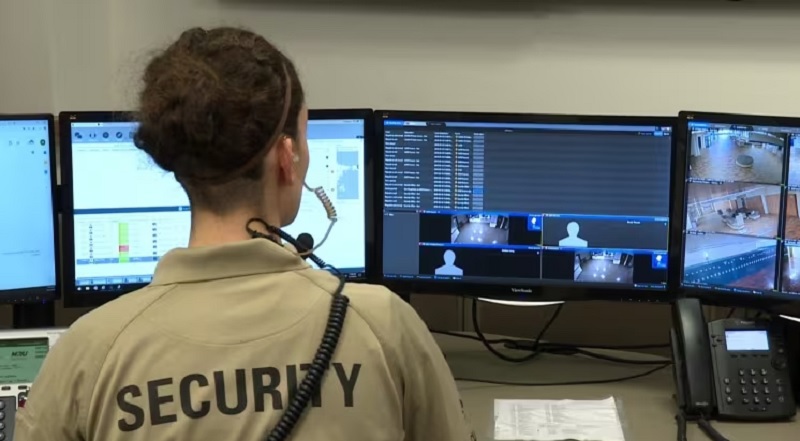Next-Gen Security Systems for Universities: Keeping Campuses Safe
4 min read
Universities are bustling hubs of learning, research, and social interaction. With thousands of students, faculty, and visitors circulating on campus daily, ensuring safety and security is paramount. The need for robust university security systems has never been more critical, given the complex challenges campuses face today, including theft, unauthorised access, and even potential violent threats. This comprehensive guide delves into the cutting-edge security systems that are setting new standards for campus safety, offering insights into their implementation and effectiveness.
The Evolving Landscape of University Security
The landscape of university security has undergone significant transformation over the years. Traditional security measures are no longer sufficient to address the sophisticated threats that modern universities face. The shift towards digitalisation and smart technologies has paved the way for next-gen security systems that offer enhanced protection and greater peace of mind for students, faculty, and parents alike.
Comprehensive Security Solutions for Universities
Today’s university security systems encompass a wide range of technologies designed to safeguard individuals and assets across campus. These integrated solutions include advanced surveillance systems, access control mechanisms, emergency communication tools, and cyber security measures, among others.
Advanced Surveillance Systems
Modern surveillance technologies extend beyond basic video monitoring. High-definition cameras equipped with facial recognition capabilities offer precise identification and can be instrumental in preventing unauthorised access or identifying individuals in security incidents. Additionally, these systems are now capable of crowd monitoring, ensuring that large gatherings remain safe and orderly.
Smart Access Control
Access control systems have evolved to offer more than just door locks and entry cards. Today, biometric systems, such as fingerprint and retina scanners, provide a higher level of security, ensuring that only authorised individuals can access sensitive areas. Moreover, digital keys and mobile access controls allow for real-time management of entry permissions, adaptable to the dynamic needs of a university campus.
Emergency Communication Platforms
In the event of an emergency, timely communication is crucial. Next-gen security systems include mass notification systems that can disseminate critical information quickly through various channels, including text messages, emails, and public address systems. These platforms can be life-saving in situations requiring immediate action or evacuation.
Cyber Security Measures
With the increasing reliance on digital platforms for education and administration, cyber security has become an integral component of university security systems. Protecting personal data, research information, and financial records from cyber threats requires sophisticated encryption, intrusion detection systems, and continuous monitoring to prevent data breaches and cyber-attacks.
Integrating Security Systems for Maximum Effectiveness
The key to maximising the effectiveness of university security systems lies in their integration. A holistic security strategy that combines physical and digital security measures can provide comprehensive protection. Integration allows for seamless communication between different security components, enabling a coordinated response to incidents and enhancing the overall safety of the campus.
Challenges and Considerations
Implementing next-gen security systems in universities is not without its challenges. Budget constraints, privacy concerns, and the need for balance between security and an open, welcoming campus environment are significant considerations. Universities must navigate these challenges carefully, ensuring that security measures are effective without being intrusive or prohibitive.
The Role of Artificial Intelligence and Machine Learning
Artificial intelligence (AI) and machine learning are at the forefront of next-gen security technologies. These advanced systems can analyse vast amounts of data from various sources, identifying patterns and predicting potential security threats with remarkable accuracy. AI-enhanced surveillance can automatically alert security personnel to suspicious activities, while machine learning algorithms improve over time, continuously enhancing security protocols.
The Human Element in University Security
While technology plays a critical role in campus security, the human element remains indispensable. Security personnel, trained in the use of advanced systems and in responding to emergencies, are crucial. Furthermore, fostering a culture of security awareness among students and staff can significantly contribute to a safer campus environment. Educational programs and workshops on security best practices can empower individuals to be proactive participants in their safety.
Future Trends in University Security Systems
As technology continues to evolve, so too will the capabilities of university security systems. We can anticipate the development of more autonomous security robots, drone surveillance, and even more advanced biometric identification technologies. The integration of Internet of Things (IoT) devices will further enhance the ability to monitor and secure campuses, offering unprecedented levels of safety and security.
Conclusion
In today’s complex world, the safety of university campuses is a paramount concern that requires sophisticated solutions. The next generation of university security systems represents a significant leap forward in ensuring the well-being of students, faculty, and visitors. By leveraging advanced technologies and integrating various security components, universities can create a secure environment conducive to learning and personal development. As we look to the future, the continued innovation and adoption of cutting-edge security measures will be key to addressing the evolving challenges faced by educational institutions worldwide. Ensuring the safety of our universities is not just about protecting physical and digital assets; it’s about safeguarding the future of our society by providing a secure foundation for education and innovation.




